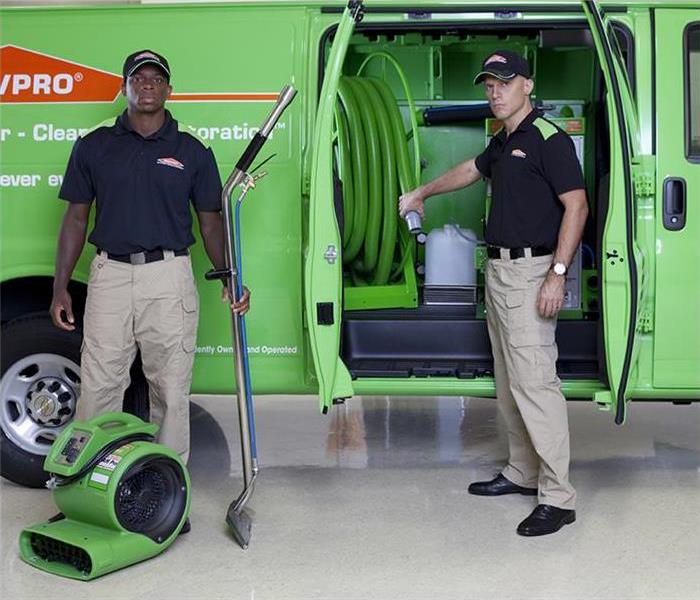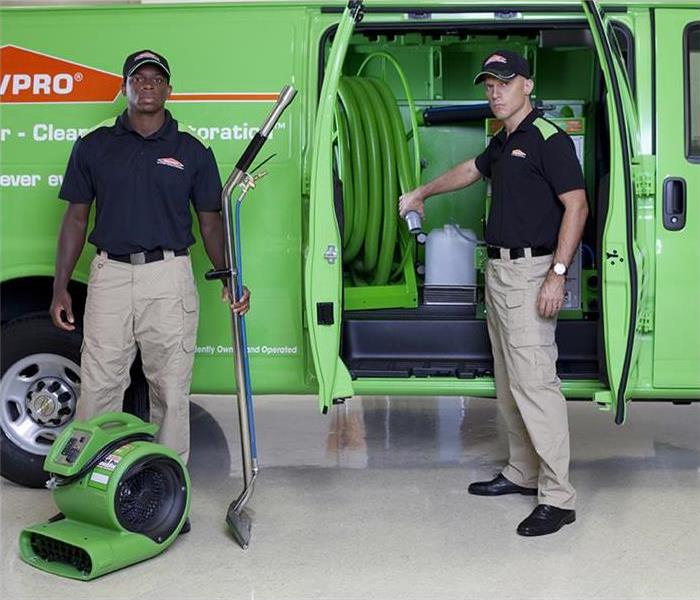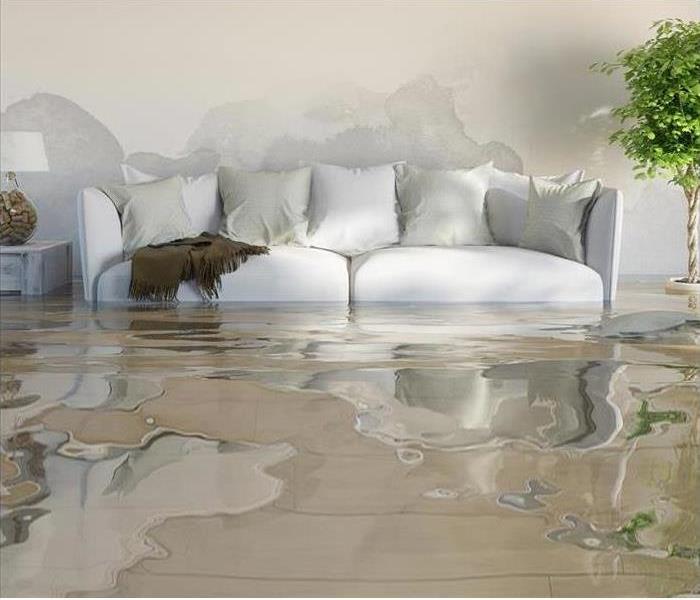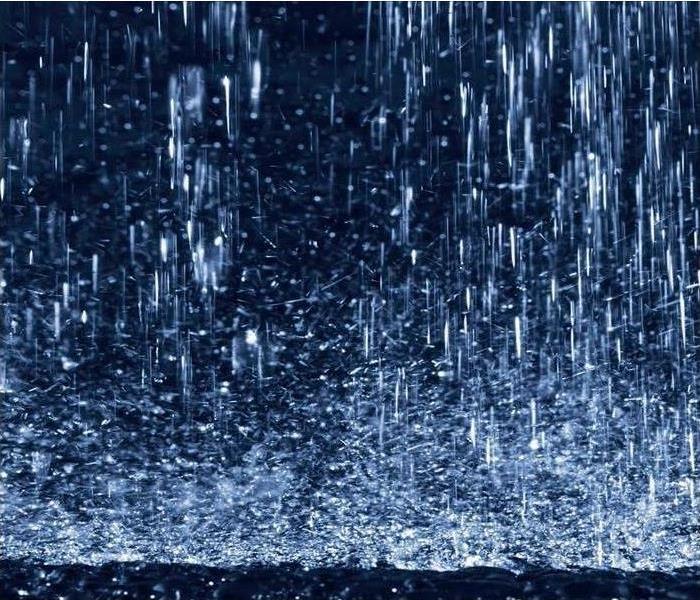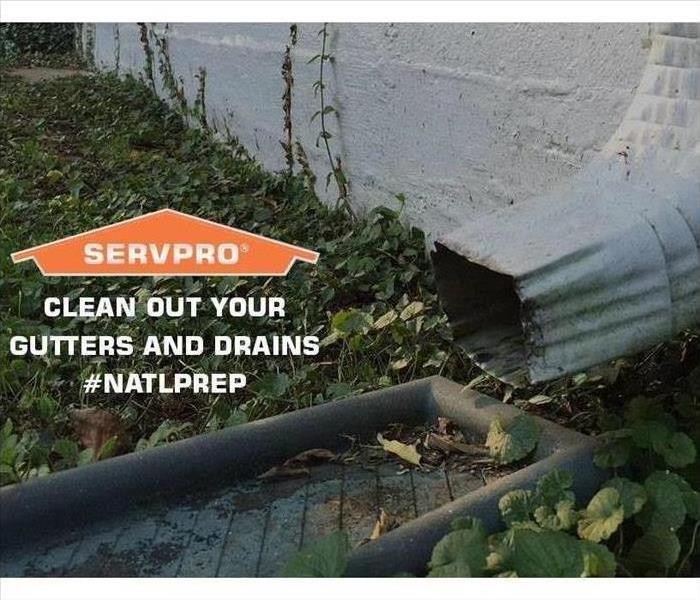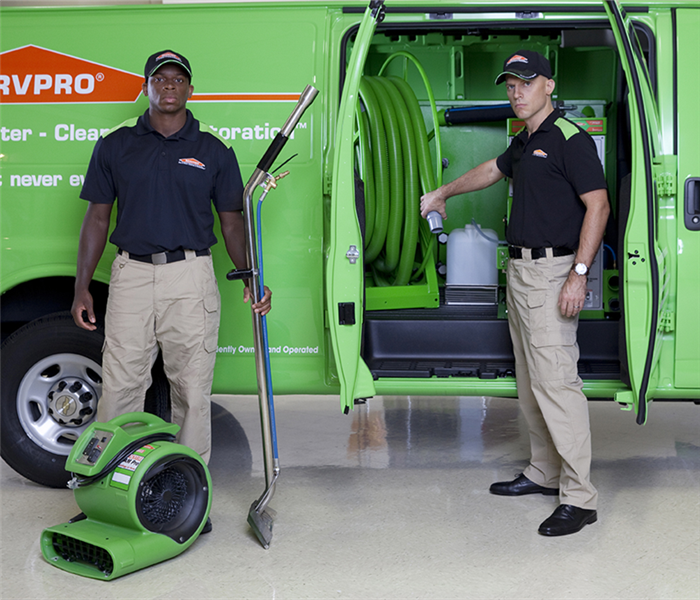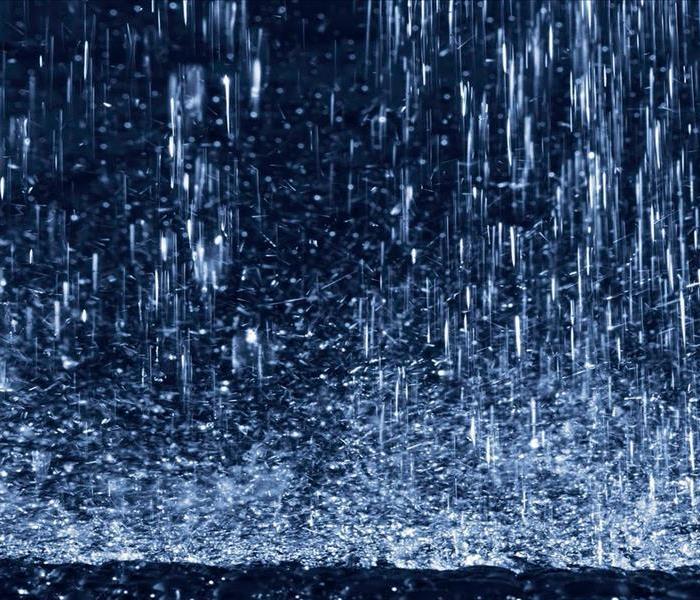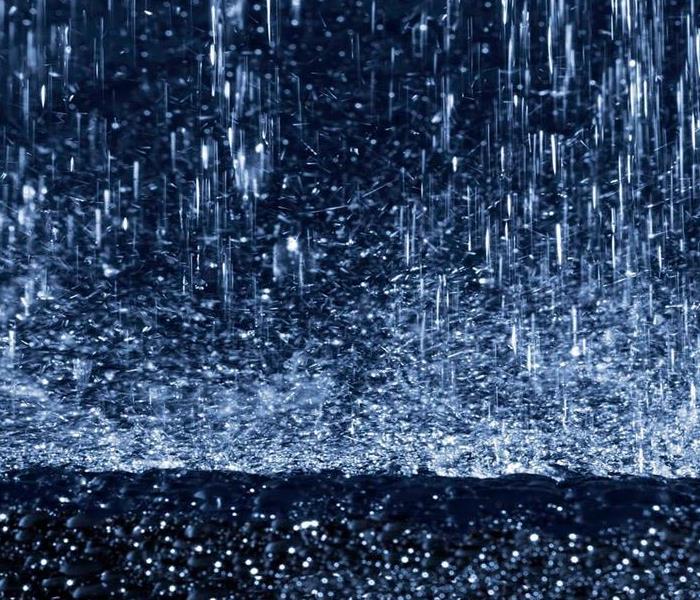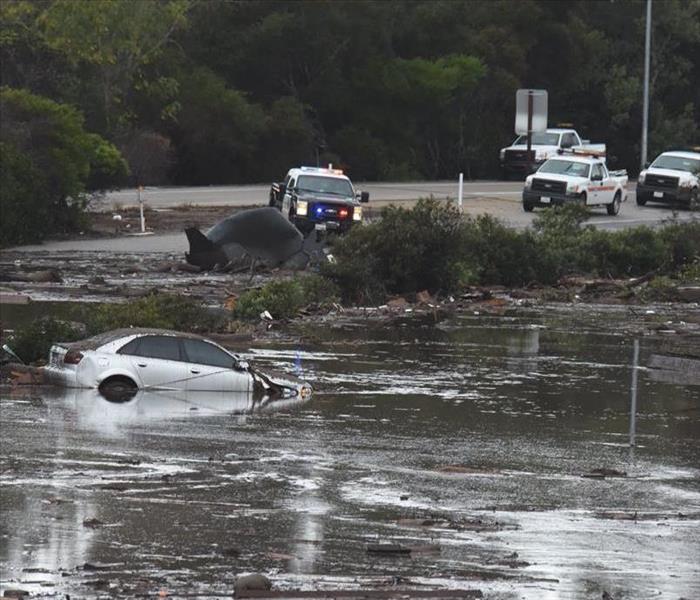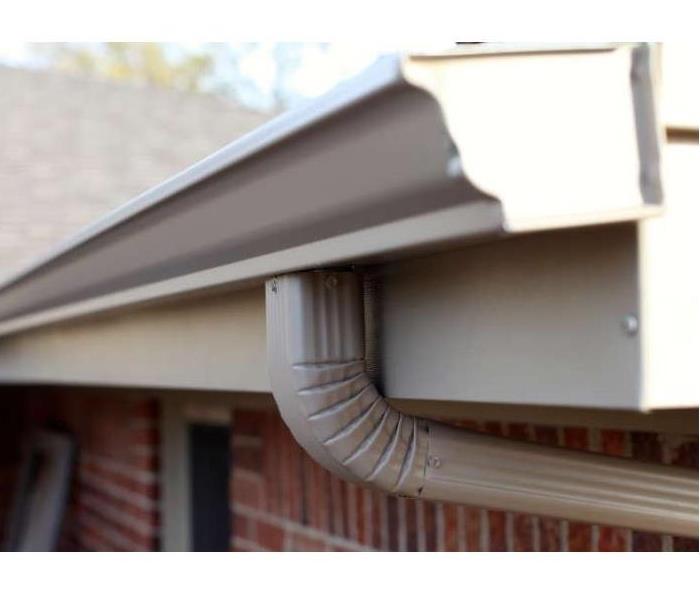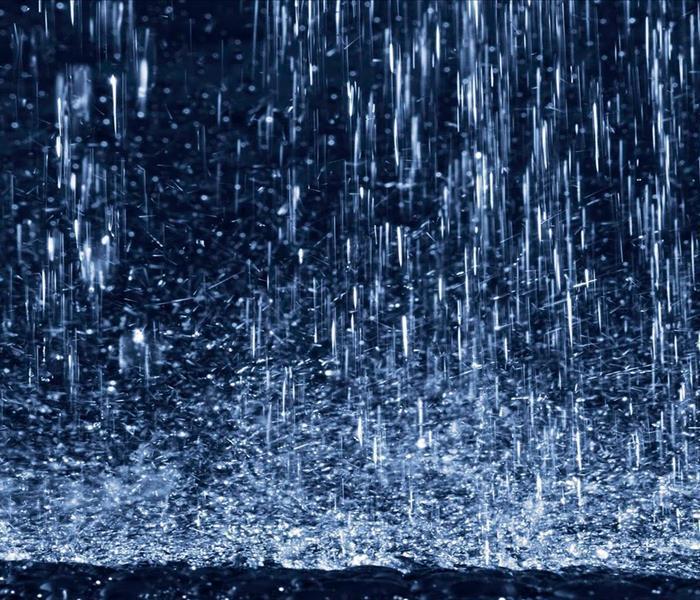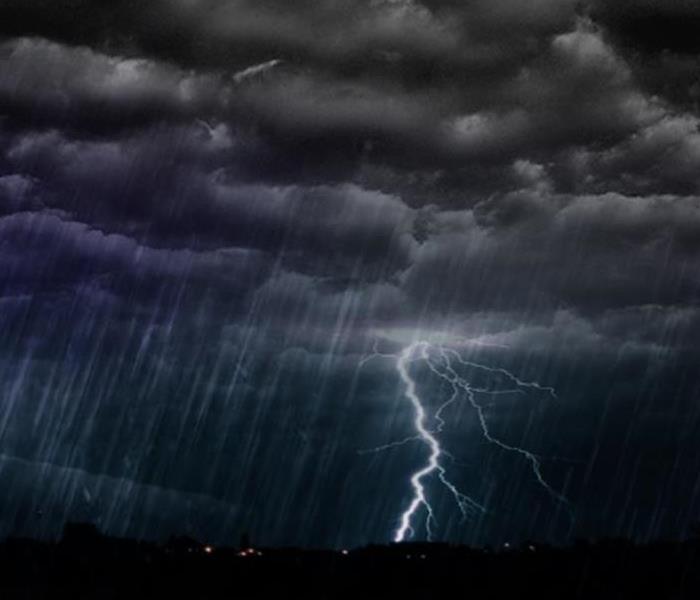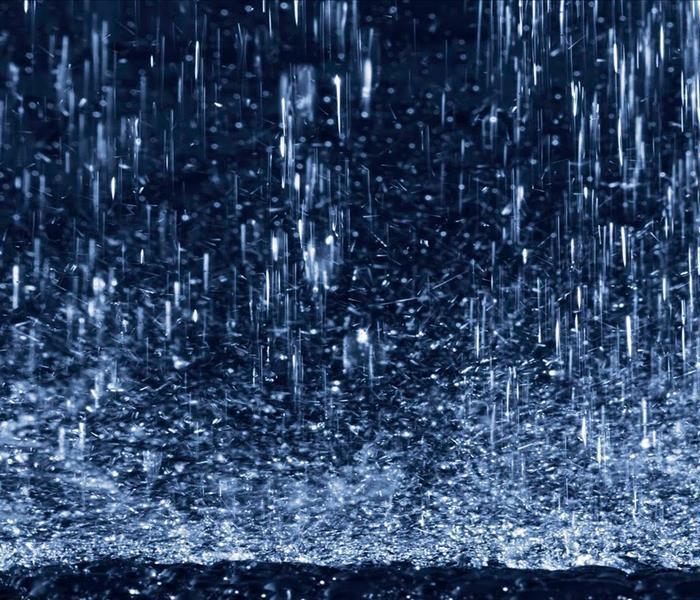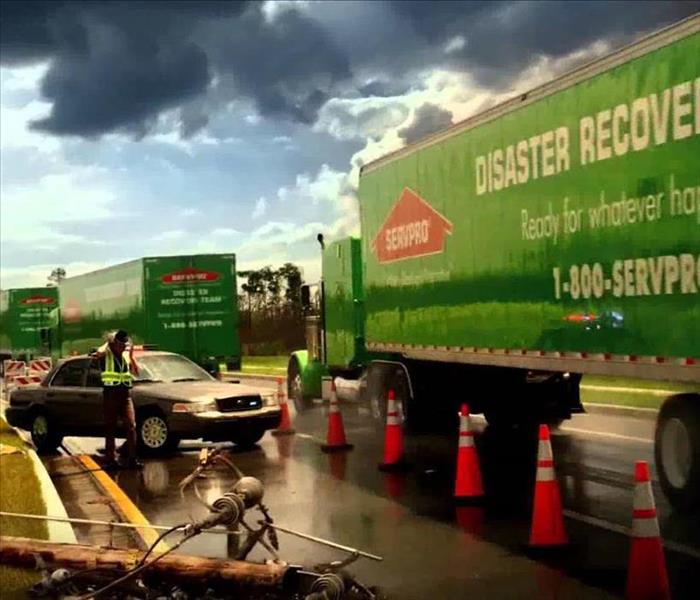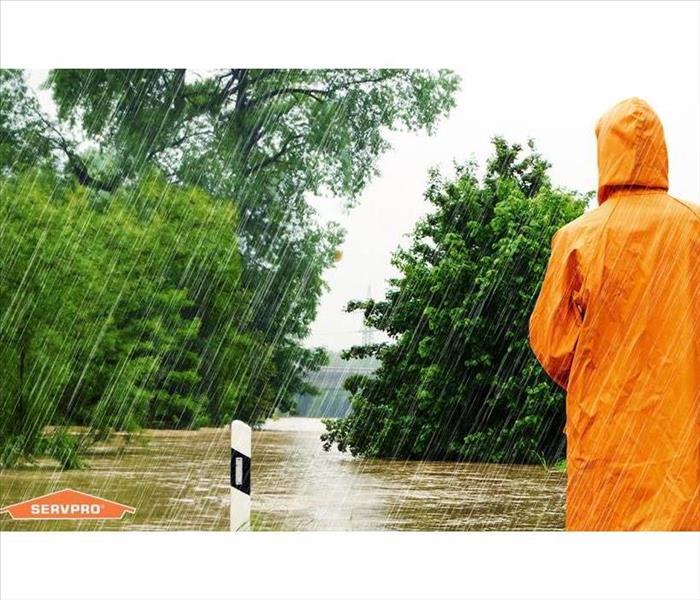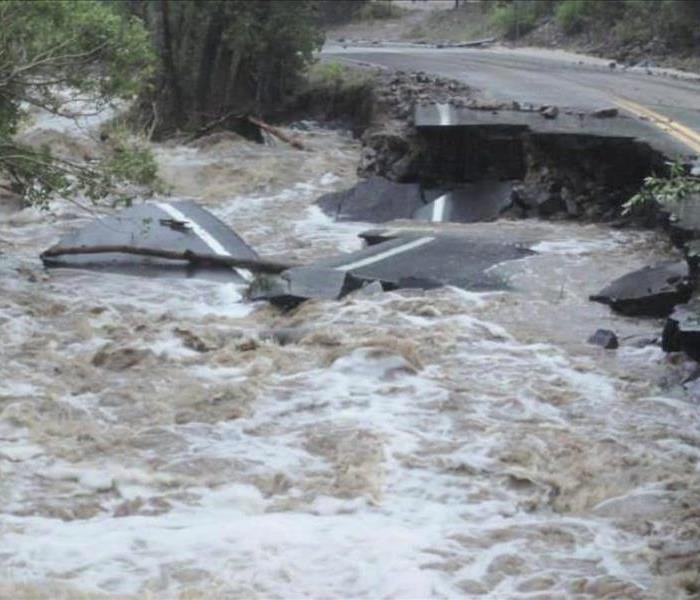Archived Storm Damage Blog Posts
Storm Prep
9/26/2022 (Permalink)
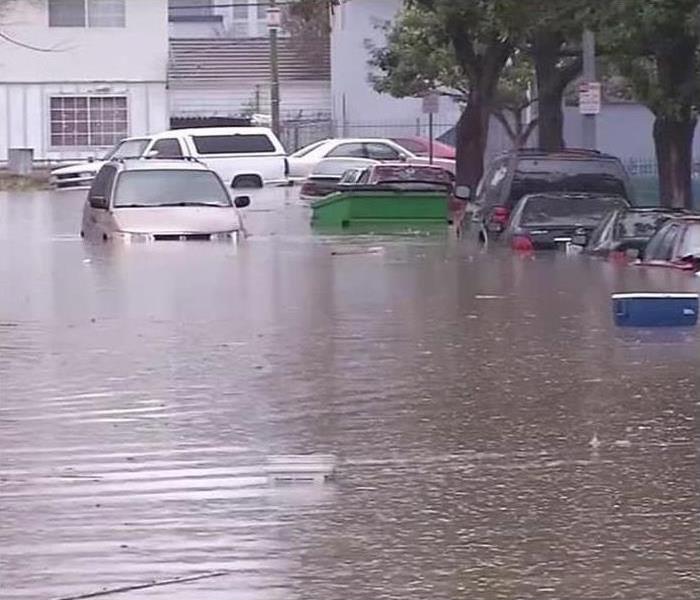 Flood
Flood
When a storm hits, sometimes it takes you by surprise. You may not have the immediate chance to grab what you need or even have it on hand at all. That is why it is so important to have a Storm Supply Kit ready to go.
A Storm Supply Kit could be described as a pre-chosen group of supplies that could assist with health and safety during or after a storm or disaster.
It would be ideal to keep a Storm Supply Kit at home, work, and in your vehicle. Here are the top 10 things that should be apart of your storm kit.
- Water: of course an obvious choice but just think about the amount of water a human body actually needs. On average a single person drinks a gallon of water a day and you should have 3 days worth of water.
- Food: of course another obvious choice but another major necessity for surviving. Again keep in mind the amount of food necessary. Experts say to have at least 3 days worth of non perishable foods
- First Aid Kit: A first aid kit is an extra very important thing to have and you should always have on hand!
- Flashlight: With the flashlight comes the necessity of having extra batteries in case some of them die.
- Matches: Make sure you store your matches in a waterproof container to prevent them getting wet.
- Needed Prescription Medication: Make sure you have any vital prescription medication you need to survive.
- Whistles or Signal for Help: Make sure you have the means if signaling for help if it ever becomes a need.
- Sanitation Wipes and any hygiene products: Just the stuff you would want to try to keep yourself in a clean state.
- Sleeping bag and/or blankets: In case of a major disaster you would want the means of staying warm/something to sleep with.
SERVPRO of Burbank is faster to any size disaster!
818-842-1400
Storm Supply Kits
3/21/2022 (Permalink)
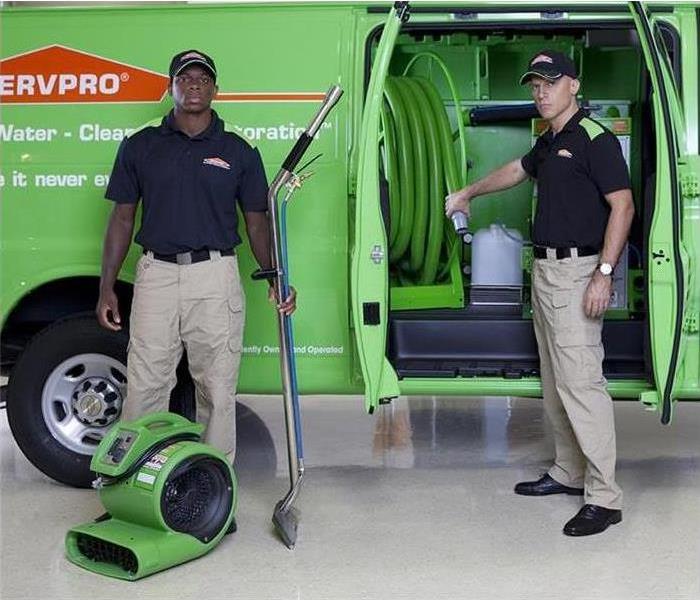 SERVPRO Crew
SERVPRO Crew
When a storm hits it can take you by surprise. You might not have the time it takes to grab everything you need in time of desperation. That is why it is so important to have a storm Supply Kit all ready to go!
A Storm Supply Kit could be described as a pre-chosen group of supplies that could assist with health and safety during or after a storm or disaster.
It would be ideal to keep a Storm Supply Kit at home, work , and in your vehicle.
Here are some supplies to keep in your kit:
- Medications needed
- First aid kit with instructions
- Flashlight
- Cash and important documents
- Food for several days
- Water for several days
- Clothing and shoes
- Pocket knife with tools attached
- Sanitation wipes and hygiene products.
SERVPRO of Burbank is faster to any size disaster!
818-842-1400
Flooding
3/14/2022 (Permalink)
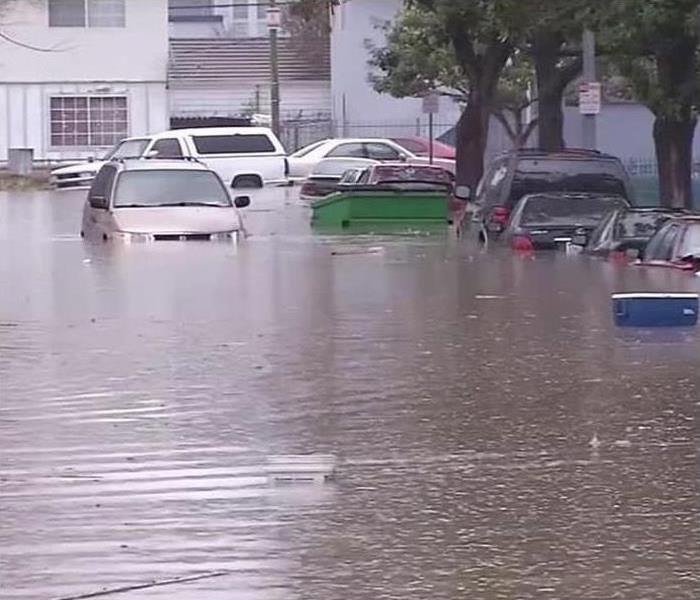 Flood
Flood
Did you know that floods are the most common natural disasters in the U.S. Heavy rainstorms can cause significant flooding, contributing to flash floods, mud-flows, or over-topping levees and dams.
Here in California heavy rains can happen, putting properties like your home or business at risk.
Tips to help your home or business avoid floods
- Purchase flood insurance. (Call your insurance agent make sure your covered for FLOODS)
- Install rain gutters and other drainage systems. (Clean out rain gutters frequently)
- Fix any leaks IMMEDIATELY.
- Extra roof protection (spend a few hundred dollars more to install a rubber roof underlayment, a waterproof barrier that goes under the shingles and protects the roof from water intrusion.)
Tips for drivers during the rain season
- Avoid cruise control (This feature works great in dry conditions, but when used in wet conditions, the chance of losing control of the vehicle can increase)
- Slow down and leave room in front of you (Slowing down during wet weather driving can be critical to reducing a car’s chance of hydroplaning, when the tires rise up on a film of water.)
Remember if you do experience a flood in your home or business SERVPRO of Burbank is one call away and we make your water damage "Like it never even happened."
Call us at (818) 842-1400
Heavy Rain Tips
2/17/2022 (Permalink)
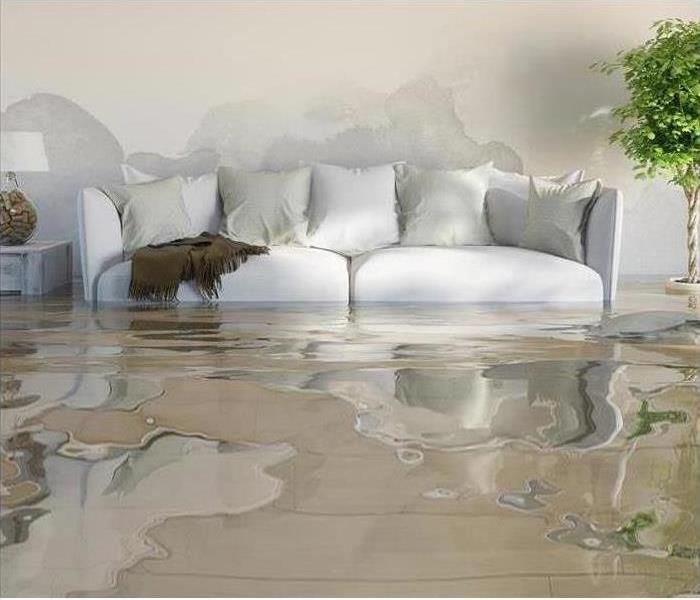 Flood
Flood
Did you know that floods are the most common natural disasters in the U.S. Heavy rain storms can cause significant flooding which contributes to flash floods, mud-flows, or over-topping levees and dams.
Tips to help your home or business avoid floods
- Purchase flood insurance. (Call your insurance agent make sure your covered for FLOODS)
- Install rain gutters and other drainage systems. (Clean out rain gutters frequently)
- Fix any leaks IMMEDIATELY.
- Extra roof protection (spend a few hundred dollars more to install a rubber roof underlayment, a waterproof barrier that goes under the shingles and protects the roof from water intrusion.)
Tips for drivers during the rain season
- Avoid cruise control (This feature works great in dry conditions, but when used in wet conditions, the chance of losing control of the vehicle can increase)
- Slow down and leave room in front of you (Slowing down during wet weather driving can be critical to reducing a car’s chance of hydroplaning, when the tires rise up on a film of water.)
Remember if you do experience a flood in your home or business SERVPRO of Burbank is one call away and we make your water damage "Like it never even happened."
Call us 24/7 at (818) 842-1400
Clean Gutters
2/4/2022 (Permalink)
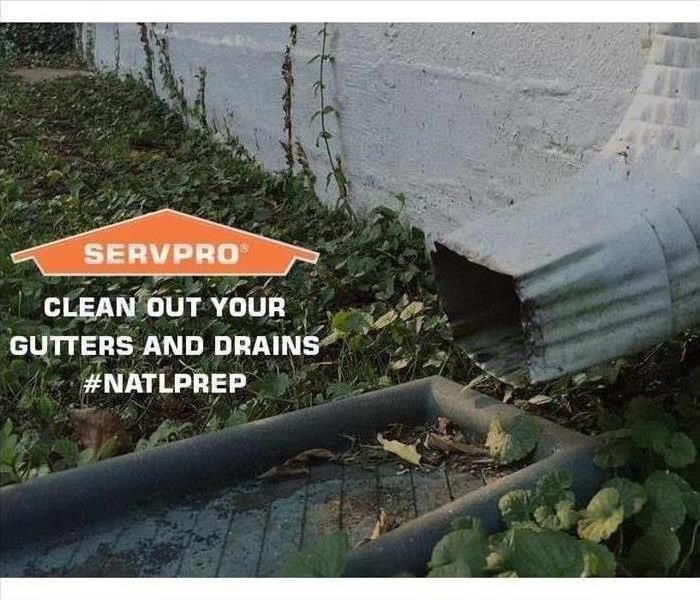 Keep Your Gutters Clean
Keep Your Gutters Clean
Gutters are a very important part of roofs for commercial and residential buildings as they are responsible for transporting water and debris off of roofs. It is vital especially in stormy seasons, that you keep your gutters functioning to their highest ability. Here are a few ways to help ensure that your gutters are doing their job and are in good condition.
- Gutters should be inspected twice a year and cleared of debris that could prevent the flow of water and materials from roof. Also, check for standing water in gutters as it could indicate inadequate flow of water. Water should be moving down off the roof toward storm drainage areas. Keeping trees trimmed near the roof will alleviate stress on gutters because the branches will not slow water flow or contribute more debris to gutters.
- Ensure water is being funneled away from the building once off the roof, as flooding can sometimes occur due to runoff not having proper.
- Water stains on the internal ceiling can indicate a roof leak.
In the case of water damage, roof leaks, and storm damage, SERVPRO of Burbank provides “24 Hour Emergency Services” 7 days a week.
Roof Damage From Storms
10/26/2021 (Permalink)
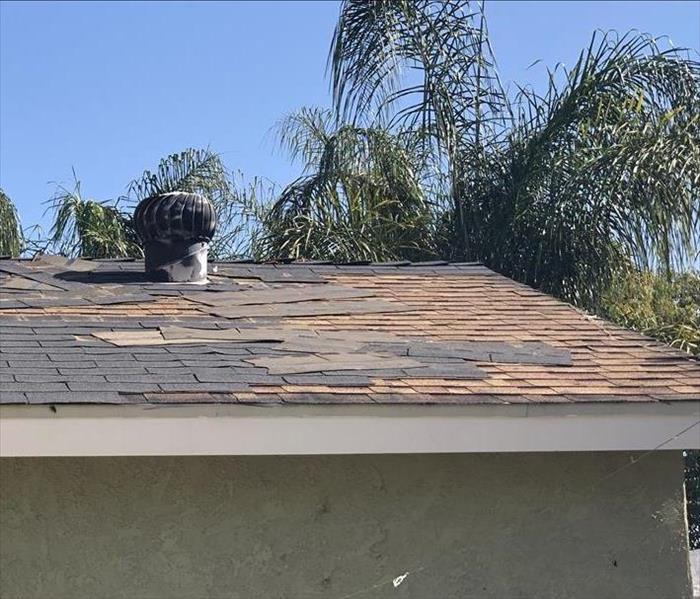 Damaged Roof
Damaged Roof
Severe or even mild thunderstorms can easily cause roof damage, especially if your roof is older than 15-20 years old. These damages can cause water intrusion in your home and if left untreated can cause more serious issues such as mold or wood rot. Some common types of roof damage from storms are:
- Split seams
- Broken or cracked tiles
- Dented or missing shingles
- Dents on gutters or vents
- Holes
All of these issues can cause water to leak into your home and you may not even notice! Unless you physically see the water damage, you may not realize that you have any. If you have an attic that you don't always go into, it is possible to have water leaking before seeing it. It is always a good idea to check for roof damage after a severe thunderstorm. A professional roofing contractor can help you with this.
In addition to these common types of damage, there are some rare occurrences of damage that can happen. Rare types of roof damage are:
- Caving in on itself
- Tree blowing over onto roof
Unfortunately for these types of rare but extreme damage, there is no way to prevent them from happening. The best thing you can do, is to get your roof replaced if older than 15 years, and to make sure to trim your trees prior to a thunderstorm.
Even if water does enter your home from roof damage, know that SERVPRO of Burbank is here to help 24/7! 818-842-1400
Preparing For A Storm
9/23/2021 (Permalink)
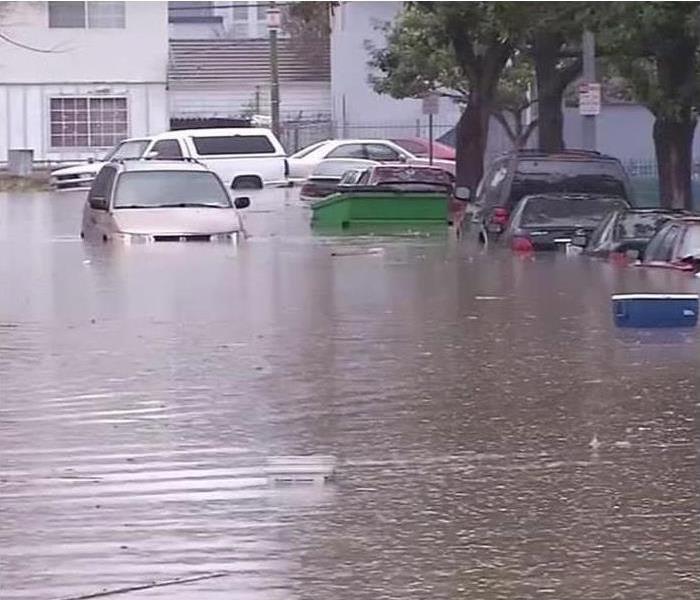 Flood
Flood
When a storm hits, sometimes it takes you by surprise. You may not have the immediate chance to grab what you need or even have it on hand at all. That is why it is so important to have a Storm Supply Kit ready to go.
A Storm Supply Kit could be described as a pre-chosen group of supplies that could assist with health and safety during or after a storm or disaster.
It would be ideal to keep a Storm Supply Kit at home, work, and in your vehicle. Here are the top 10 things that should be apart of your storm kit.
- Water: of course an obvious choice but just think about the amount of water a human body actually needs. On average a single person drinks a gallon of water a day and you should have 3 days worth of water.
- Food: of course another obvious choice but another major necessity for surviving. Again keep in mind the amount of food necessary. Experts say to have at least 3 days worth of non perishable foods
- First Aid Kit: A first aid kit is an extra very important thing to have and you should always have on hand!
- Flashlight: With the flashlight comes the necessity of having extra batteries in case some of them die.
- Matches: Make sure you store your matches in a waterproof container to prevent them getting wet.
- Needed Prescription Medication: Make sure you have any vital prescription medication you need to survive.
- Whistles or Signal for Help: Make sure you have the means if signaling for help if it ever becomes a need.
- Sanitation Wipes and any hygiene products: Just the stuff you would want to try to keep yourself in a clean state.
- Sleeping bag and/or blankets: In case of a major disaster you would want the means of staying warm/something to sleep with.
SERVPRO of Burbank is faster to any size disaster!
818-842-1400
Strom Ready
3/22/2021 (Permalink)
When a storm hits it can take you by surprise. You might not have the time it takes to grab everything you need in time of desperation. That is why it is so important to have a storm Supply Kit all ready to go!
A Storm Supply Kit could be described as a pre-chosen group of supplies that could assist with health and safety during or after a storm or disaster.
It would be ideal to keep a Storm Supply Kit at home, work , and in your vehicle.
Here are some supplies to keep in your kit:
- Medications needed
- First aid kit with instructions
- Flashlight
- Cash and important documents
- Food for several days
- Water for several days
- Clothing and shoes
- Pocket knife with tools attached
- Sanitation wipes and hygiene products.
SERVPRO of Burbank is faster to any size disaster!
818-842-1400
Floods
3/15/2021 (Permalink)
Did you know that floods are the most common natural disasters in the U.S. Heavy rainstorms can cause significant flooding, contributing to flash floods, mud-flows, or over-topping levees and dams.
Here in California heavy rains can happen, putting properties like your home or business at risk.
Tips to help your home or business avoid floods
- Purchase flood insurance. (Call your insurance agent make sure your covered for FLOODS)
- Install rain gutters and other drainage systems. (Clean out rain gutters frequently)
- Fix any leaks IMMEDIATELY.
- Extra roof protection (spend a few hundred dollars more to install a rubber roof underlayment, a waterproof barrier that goes under the shingles and protects the roof from water intrusion.)
Tips for drivers during the rain season
- Avoid cruise control (This feature works great in dry conditions, but when used in wet conditions, the chance of losing control of the vehicle can increase)
- Slow down and leave room in front of you (Slowing down during wet weather driving can be critical to reducing a car’s chance of hydroplaning, when the tires rise up on a film of water.)
Remember if you do experience a flood in your home or business SERVPRO of Burbank is one call away and we make your water damage "Like it never even happened."
Call us at (818) 842-1400
Tips During Heavy Rains
2/19/2021 (Permalink)
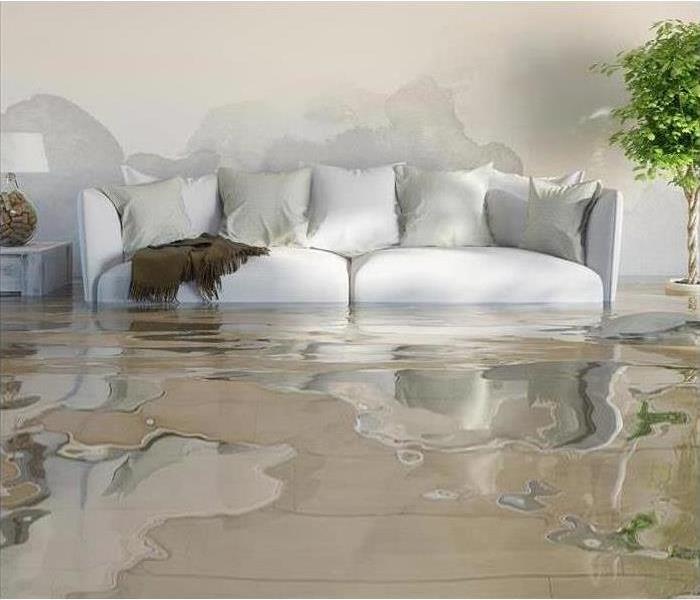 Home Flood
Home Flood
Did you know that floods are the most common natural disasters in the U.S. Heavy rain storms can cause significant flooding which contributes to flash floods, mud-flows, or over-topping levees and dams.
Tips to help your home or business avoid floods
- Purchase flood insurance. (Call your insurance agent make sure your covered for FLOODS)
- Install rain gutters and other drainage systems. (Clean out rain gutters frequently)
- Fix any leaks IMMEDIATELY.
- Extra roof protection (spend a few hundred dollars more to install a rubber roof underlayment, a waterproof barrier that goes under the shingles and protects the roof from water intrusion.)
Tips for drivers during the rain season
- Avoid cruise control (This feature works great in dry conditions, but when used in wet conditions, the chance of losing control of the vehicle can increase)
- Slow down and leave room in front of you (Slowing down during wet weather driving can be critical to reducing a car’s chance of hydroplaning, when the tires rise up on a film of water.)
Remember if you do experience a flood in your home or business SERVPRO of Burbank is one call away and we make your water damage "Like it never even happened."
Call us 24/7 at (818) 842-1400
Gutters and Drains
2/2/2021 (Permalink)
 Please clean out your gutters and drains to avoid water damage
Please clean out your gutters and drains to avoid water damage
Gutters are a very important part of roofs for commercial and residential buildings as they are responsible for transporting water and debris off of roofs. It is vital especially in stormy seasons, that you keep your gutters functioning to their highest ability. Here are a few ways to help ensure that your gutters are doing their job and are in good condition.
- Gutters should be inspected twice a year and cleared of debris that could prevent the flow of water and materials from roof. Also, check for standing water in gutters as it could indicate inadequate flow of water. Water should be moving down off the roof toward storm drainage areas. Keeping trees trimmed near the roof will alleviate stress on gutters because the branches will not slow water flow or contribute more debris to gutters.
- Ensure water is being funneled away from the building once off the roof, as flooding can sometimes occur due to runoff not having proper.
- Water stains on the internal ceiling can indicate a roof leak.
In the case of water damage, roof leaks, and storm damage, SERVPRO of Burbank provides “24 Hour Emergency Services” 7 days a week.
Roof Damage From Storms
10/23/2020 (Permalink)
 Shingles blown off of a roof from a storm.
Shingles blown off of a roof from a storm.
Severe or even mild thunderstorms can easily cause roof damage, especially if your roof is older than 15-20 years old. These damages can cause water intrusion in your home and if left untreated can cause more serious issues such as mold or wood rot. Some common types of roof damage from storms are:
- Split seams
- Broken or cracked tiles
- Dented or missing shingles
- Dents on gutters or vents
- Holes
All of these issues can cause water to leak into your home and you may not even notice! Unless you physically see the water damage, you may not realize that you have any. If you have an attic that you don't always go into, it is possible to have water leaking before seeing it. It is always a good idea to check for roof damage after a severe thunderstorm. A professional roofing contractor can help you with this.
In addition to these common types of damage, there are some rare occurrences of damage that can happen. Rare types of roof damage are:
- Caving in on itself
- Tree blowing over onto roof
Unfortunately for these types of rare but extreme damage, there is no way to prevent them from happening. The best thing you can do, is to get your roof replaced if older than 15 years, and to make sure to trim your trees prior to a thunderstorm.
Even if water does enter your home from roof damage, know that SERVPRO of Burbank is here to help 24/7! 818-842-1400
Storm Preparedness
9/23/2020 (Permalink)
When a storm hits, sometimes it takes you by surprise. You may not have the immediate chance to grab what you need or even have it on hand at all. That is why it is so important to have a Storm Supply Kit ready to go.
A Storm Supply Kit could be described as a pre-chosen group of supplies that could assist with health and safety during or after a storm or disaster.
It would be ideal to keep a Storm Supply Kit at home, work, and in your vehicle. Here are the top 10 things that should be apart of your storm kit.
- Water: of course an obvious choice but just think about the amount of water a human body actually needs. On average a single person drinks a gallon of water a day and you should have 3 days worth of water.
- Food: of course another obvious choice but another major necessity for surviving. Again keep in mind the amount of food necessary. Experts say to have at least 3 days worth of non perishable foods
- First Aid Kit: A first aid kit is an extra very important thing to have and you should always have on hand!
- Flashlight: With the flashlight comes the necessity of having extra batteries in case some of them die.
- Matches: Make sure you store your matches in a waterproof container to prevent them getting wet.
- Needed Prescription Medication: Make sure you have any vital prescription medication you need to survive.
- Whistles or Signal for Help: Make sure you have the means if signaling for help if it ever becomes a need.
- Sanitation Wipes and any hygiene products: Just the stuff you would want to try to keep yourself in a clean state.
- Sleeping bag and/or blankets: In case of a major disaster you would want the means of staying warm/something to sleep with.
SERVPRO of Burbank is faster to any size disaster!
818-842-1400
Keeping your Home safe During the Rain
2/19/2020 (Permalink)
Did you know that floods are the most common natural disasters in the U.S. Heavy rain storms can cause significant flooding which contributes to flash floods, mud-flows, or over-topping levees and dams.
Tips to help your home or business avoid floods
- Purchase flood insurance. (Call your insurance agent make sure your covered for FLOODS)
- Install rain gutters and other drainage systems. (Clean out rain gutters frequently)
- Fix any leaks IMMEDIATELY.
- Extra roof protection (spend a few hundred dollars more to install a rubber roof underlayment, a waterproof barrier that goes under the shingles and protects the roof from water intrusion.)
Tips for drivers during the rain season
- Avoid cruise control (This feature works great in dry conditions, but when used in wet conditions, the chance of losing control of the vehicle can increase)
- Slow down and leave room in front of you (Slowing down during wet weather driving can be critical to reducing a car’s chance of hydroplaning, when the tires rise up on a film of water.)
Remember if you do experience a flood in your home or business SERVPRO of Burbank is one call away and we make your water damage "Like it never even happened."
Call us 24/7 at (818) 842-1400
Supply Kits
2/3/2020 (Permalink)
In the case of a surprise storm the importance of having a Storm Supply Kit prepared and ready to go is vital.
A Storm Supply Kit could be described as a pre-chosen group of supplies that could assist with health and safety during or after a storm or disaster.
It would be ideal to keep a Storm Supply Kit at home, work , and in your vehicle.
Here are some supplies to keep in your kit:
- Medications needed: Making sure any necessary Medications needed for your health.
- first aid kit with instructions: This is one of the most important things to always have on hand.
- flashlight
- cash and important documents
- food for several days
- water for several days
- clothing and shoes
- pocket knife with tools attached
- Sanitation wipes and hygiene products.
SERVPRO of Burbank is faster to any size disaster!
818-842-1400
Keep your Gutters Clean
10/25/2019 (Permalink)
Gutters are a very important part of roofs for commercial and residential buildings as they are responsible for transporting water and debris off of roofs. It is vital especially in stormy seasons, that you keep your gutters functioning to their highest ability. Here are a few ways to help ensure that your gutters are doing their job and are in good condition.
- Gutters should be inspected twice a year and cleared of debris that could prevent the flow of water and materials from roof. Also, check for standing water in gutters as it could indicate inadequate flow of water. Water should be moving down off the roof toward storm drainage areas. Keeping trees trimmed near the roof will alleviate stress on gutters because the branches will not slow water flow or contribute more debris to gutters.
- Ensure water is being funneled away from the building once off the roof, as flooding can sometimes occur due to runoff not having proper.
- Water stains on the internal ceiling can indicate a roof leak.
In the case of water damage, roof leaks, and storm damage, SERVPRO of Burbank provides “24 Hour Emergency Services” 7 days a week.
SERVPRO Storm Team
4/15/2019 (Permalink)
As wildfires and major storms roll out, watch SERVPRO's Storm Teams roll in.
SERVPRO of Burbank is part of a network of over 1,800 restoration specialists, stretching throughout the United States as well as Canada – strategically stationed to be available for whatever happens at a moment’s notice. When things that matter most are on the line, make sure SERVPRO® is too. SERVPRO of Burbank is faster to any size disaster.
Should a storm or natural disaster situation strike the greater Los Angeles area, our office will notify local and surrounding SERVPRO locations. And as we begin to provide relief to homes and businesses alike, hundreds if not thousands of highly-trained SERVPRO professionals will start to pour into the disaster zone and provide back up and support to our already existing restoration efforts. Whether it’s damage caused by a leaky water pipe or an earthquake of catastrophic magnitudes, there’s no such thing as a job too big that SERVPRO can’t handle!
The days immediately following a major storm event, such as area-wide flooding, are critical to prevent secondary damages, like mold. SERVPRO of Burbank suggests the following steps to help minimize additional damage to your property.
- If the water has entered the structure through the flooding of a creek, stream or river, or if it has filtered through insulation during its intrusion, it is considered to be black water and could be hazardous to your health. Avoid contact with contaminated items as much as possible.
- Take the greatest caution while entering your home, and wear sturdy shoes and protective clothing when dealing with flooded areas.
- Do not attempt to operate any electrical equipment while standing in wet or damp locations.
- Throw away all foods - even canned goods - that have come into contact with flood waters.
- Remove and prop wet upholstery and pillow cushions for drying. Wipe excess water from wood furniture after removal of lamps and tabletop items.
- Place fans at 45-degree angles to walls and move large furniture away from walls to create the best air circulation.
- If your home has a crawlspace, be aware excess moisture in this area can often foster mold growth.
"The first 24 hours after a water damage or flood are so crucial to keeping final costs of the damage down," said Don Turner, Director of SERVPRO’s Disaster Recovery Team. "A lot of flood situations require professional equipment and knowledge of the science of drying to mitigate. By taking these steps, property owners can help minimize damage until the professionals arrive."
Supply Kits for a Storm
3/1/2019 (Permalink)
When a storm hits, sometimes it takes you by surprise. You may not have the immediate chance to grab what you need or even have it on hand at all. That is why it is so important to have a Storm Supply Kit ready to go.
A Storm Supply Kit could be described as a pre-chosen group of supplies that could assist with health and safety during or after a storm or disaster.
It would be ideal to keep a Storm Supply Kit at home, work , and in your vehicle.
Here are some supplies to keep in your kit:
1. Medications needed
2. first aid kit with instructions
3. flashlight
4. cash and important documents
5. food for several days
6. water for several days
7. clothing and shoes
8. pocket knife with tools attached
9. Sanitation wipes and hygiene products.
SERVPRO of Burbank is faster to any size disaster!
818-842-1400
Flood Tips
2/19/2019 (Permalink)
Did you know that floods are the most common natural disasters in the U.S. Heavy rainstorm can cause significant
flooding, contributing to flash floods, mud-flows,
or over-topping levees and dams. Here in California heavy rains can happen, putting properties like your home or business at risk.
Tips to help your home or business avoid floods
- Purchase flood insurance. (Call your insurance agent make sure your covered for FLOODS)
- Install rain gutters and other drainage systems. (Clean out rain gutters frequently)
- Fix any leaks IMMEDIATELY.
- Extra roof protection (spend a few hundred dollars more to install a rubber roof underlayment, a waterproof barrier that goes under the shingles and protects the roof from water intrusion.)
Tips for drivers during the rain season
- Avoid cruise control (This feature works great in dry conditions, but when used in wet conditions, the chance of losing control of the vehicle can increase)
- Slow down and leave room in front of you (Slowing down during wet weather driving can be critical to reducing a car’s chance of hydroplaning, when the tires rise up on a film of water.)
Remember if you do experience a flood in your home or business SERVPRO of Burbank is one call away and we make your water damage "Like it never even happened."
call us at (818) 842-1400
Roof Protection In A Storm
2/1/2019 (Permalink)
Although Southern California isn't the most common place for torrential rains, we do have the occasional storm that brings in high winds and heavy rains. Many people are not prepared for these storms and are left with roof damage.
Here are some tips at protecting your roof from a potential storm!
1. Make sure your doors and windows are shut and secured. If a door is open or a window is broken during a storm, airflow can suddenly change the pressure inside the home causing the roof to act as a parachute.
2. If you know a storm is coming, or in SoCal if you are warned about a flash flood, take inventory of your home by taking pictures and accounting for what could be loss. You will want to be prepared before contacting your insurance company.
3.Trim your trees! If tree branches are close to your home, the heavy winds can make them act as a whip and bring damage to your home and roof. If winds are high enough they can also cause branches to break and fall onto your home.
SERVPRO of Burbank is faster to any size disaster!
818-842-1400
Storm Team
10/22/2018 (Permalink)
SERVPRO of Burbank is part of a network of over 1,800 restoration specialists, stretching throughout the United States as well as Canada – strategically stationed to be available for whatever happens at a moment’s notice. When things that matter most are on the line, make sure SERVPRO® is too. SERVPRO of Burbank is faster to any size disaster.
Should a storm or natural disaster situation strike the greater Los Angeles area, our office will notify local and surrounding SERVPRO locations. And as we begin to provide relief to homes and businesses alike, hundreds if not thousands of highly-trained SERVPRO professionals will start to pour into the disaster zone and provide back up and support to our already existing restoration efforts. Whether it’s damage caused by a leaky water pipe or an earthquake of catastrophic magnitudes, there’s no such thing as a job too big that SERVPRO can’t handle!
The days immediately following a major storm event, such as area-wide flooding, are critical to prevent secondary damages, like mold. SERVPRO of Burbank suggests the following steps to help minimize additional damage to your property.
- If the water has entered the structure through the flooding of a creek, stream or river, or if it has filtered through insulation during its intrusion, it is considered to be black water and could be hazardous to your health. Avoid contact with contaminated items as much as possible.
- Take the greatest caution while entering your home, and wear sturdy shoes and protective clothing when dealing with flooded areas.
- Do not attempt to operate any electrical equipment while standing in wet or damp locations.
- Throw away all foods - even canned goods - that have come into contact with flood waters.
- Remove and prop wet upholstery and pillow cushions for drying. Wipe excess water from wood furniture after removal of lamps and tabletop items.
- Place fans at 45-degree angles to walls and move large furniture away from walls to create the best air circulation.
- If your home has a crawlspace, be aware excess moisture in this area can often foster mold growth.
"The first 24 hours after a water damage or flood are so crucial to keeping final costs of the damage down," said Don Turner, Director of SERVPRO’s Disaster Recovery Team. "A lot of flood situations require professional equipment and knowledge of the science of drying to mitigate. By taking these steps, property owners can help minimize damage until the professionals arrive."
Why Gutters are Important
10/17/2018 (Permalink)
Gutters are a very important part of roofs for commercial and residential buildings as they are responsible for transporting water and debris off of roofs. Especially in stormy seasons, it is important to ensure gutters are functioning to their highest ability.
Removal of water and debris in gutters lightens the load on the roof, preventing the possibility of roof leaks and caving under stress from weather. It is important gutters are maintained in optimal working condition to prevent damage to the entire commercial or residential structure.
Gutters should be inspected twice yearly and cleared of debris that could prevent flow of water and materials from roof. Also, check for standing water in gutters as it could indicate inadequate flow of water. Water should be moving down off the roof toward storm drainage areas. Keeping trees trimmed near the roof will alleviate stress on gutters because the branches will not slow water flow or contribute more debris to gutters.
Ensure water is being funneled away from the building once off the roof, as flooding can sometimes occur due to runoff not having proper.
Water stains on the internal ceiling can indicate a roof leak.
In the case of water damage, roof leaks, and storm damage, SERVPRO of Burbank provides “24 Hour Emergency Services.”
Spring Showers
4/17/2018 (Permalink)
Spring is the time of year when many things change—including the weather. Temperatures here in Los Angeles can swing back and forth between a pleasant, almost beach-perfect day to a “close your windows and turn back on the heater” night. Sunny days may be followed by a week of stormy weather. Sometimes extreme weather changes can occur even within the same day. Mark Twain once said, "In the spring I have counted one hundred and thirty-six kinds of weather inside of four and twenty hours."
Thunderstorms cause most of the severe spring weather. They can bring lighting, flooding and all sorts of additional issues. Whenever warm, moist air collides with cool, dry air, thunderstorms can occur. For much of the world, this happens in spring and summer.
Because spring weather is so unpredictable, you may be unprepared when severe weather hits—particularly if you’ve never experienced severe weather as we do in most other parts of the country. And when severe weather hits unexpectedly, the risk of injury increases. So planning ahead makes sense; prepare for storms, floods, and other natural disasters as if you know in advance they are coming, because in the spring, they very likely will.
Advance planning for thunderstorms, lightning, earthquakes, and floods requires specific safety precautions.
Often by the time we are aware of an approaching storm, we have little if any time to prepare for it.
Advance planning for thunderstorms, lightning, earthquakes, and floods requires specific safety precautions. You can follow many of the same steps that you would for all extreme weather events. Keep an emergency kit on hand. Some items to include are:
- A battery-operated flashlight, a battery-operated NOAA Weather Radio, and extra batteries for both
- An emergency evacuation or shelter plan, including a map of your home and, for every type of severe weather emergency, routes to safety from each room
- A list of important personal information, including:
- telephone numbers of neighbors, family, and friends
- insurance and property information
- telephone numbers of utility companies
- medical information
- According to the American Red Cross, a first aid kit may include:
- non-latex gloves
- assortment of adhesive bandages
- antibiotic ointment
- sterile gauze pads in assorted sizes
- absorbent compress dressings
- tweezers
- scissors
- adhesive cloth tape
- aspirin packets (81 mg each)
- First aid instruction booklet
(NOTE: Customize your first aid kit to meet your individual and family needs.)
- A 3–5 day supply of bottled water and nonperishable food
- Personal hygiene items
- Blankets or sleeping bags
- An emergency kit in your car
Prepare your family members for the possibility of severe weather. Tell them where to seek appropriate shelter as soon as they are aware of an approaching storm. Practice your emergency plan for every type of severe weather. Show family members where the emergency supplies are stored, and make sure they know how to turn off the water, gas, and electricity in your home.
Often by the time we are aware of an approaching storm, we have little if any time to prepare for it. But we do know that when spring arrives, thunderstorms, tornadoes, and floods are real possibilities. So why not take the surprise factor out of severe weather and prepare yourself, your family, and your home? If thunderstorms, tornadoes, and floods do occur, you'll be ready for them.
(Special thanks are in order to our friends at the CDC for helping us gather a lot of these tidbits of helpful prep knowledge: https://www.cdc.gov/features/springweather/
Storm Supply Kits
3/5/2018 (Permalink)
When a storm hits, sometimes it takes you by surprise. You may not have the immediate chance to grab what you need or even have it on hand at all. That is why it is so important to have a Storm Supply Kit ready to go.
A Storm Supply Kit could be described as a pre-chosen group of supplies that could assist with health and safety during or after a storm or disaster.
It would be ideal to keep a Storm Supply Kit at home, work , and in your vehicle.
Here are some supplies to keep in your kit:
1. Medications needed
2. first aid kit with instructions
3. flashlight
4. cash and important documents
5. food for several days
6. water for several days
7. clothing and shoes
8. pocket knife with tools attached
9. Sanitation wipes and hygiene products.
SERVPRO of Burbank is faster to any size disaster!
818-842-1400
Tips for Rainy Days
2/23/2018 (Permalink)
Did you know that floods are the most common natural disasters in the U.S. Heavy rainstorm can cause significant
flooding, contributing to flash floods, mud-flows,
or over-topping levees and dams. Here in California heavy rains can happen, putting properties like your home or business at risk.
Tips to help your home or business avoid floods
- Purchase flood insurance. (Call your insurance agent make sure your covered for FLOODS)
- Install rain gutters and other drainage systems. (Clean out rain gutters frequently)
- Fix any leaks IMMEDIATELY.
- Extra roof protection (spend a few hundred dollars more to install a rubber roof underlayment, a waterproof barrier that goes under the shingles and protects the roof from water intrusion.)
Tips for drivers during the rain season
- Avoid cruise control (This feature works great in dry conditions, but when used in wet conditions, the chance of losing control of the vehicle can increase)
- Slow down and leave room in front of you (Slowing down during wet weather driving can be critical to reducing a car’s chance of hydroplaning, when the tires rise up on a film of water.)
Remember if you do experience a flood in your home or business SERVPRO of Burbank is one call away and we make your water damage "Like it never even happened"
call us at (818) 842-1400
Protecting Your Roof From a Storm
2/1/2018 (Permalink)
Although Southern California isn't the most common place for torrential rains, we do have the occasional storm that brings in high winds and heavy rains. Many people are not prepared for these storms and are left with roof damage.
Here are some tips at protecting your roof from a potential storm!
1. Make sure your doors and windows are shut and secured. If a door is open or a window is broken during a storm, airflow can suddenly change the pressure inside the home causing the roof to act as a parachute.
2. If you know a storm is coming, or in SoCal if you are warned about a flash flood, take inventory of your home by taking pictures and accounting for what could be loss. You will want to be prepared before contacting your insurance company.
3.Trim your trees! If tree branches are close to your home, the heavy winds can make them act as a whip and bring damage to your home and roof. If winds are high enough they can also cause branches to break and fall onto your home.
SERVPRO of Burbank is faster to any size disaster!
818-842-1400
SERVPRO Storm Team
10/25/2017 (Permalink)
SERVPRO of Burbank is part of a network of over 1,800 restoration specialists, stretching throughout the United States as well as Canada – strategically stationed to be available for whatever happens at a moment’s notice. When things that matter most are on the line, make sure SERVPRO® is too. SERVPRO of Burbank is faster to any size disaster.
Should a storm or natural disaster situation strike the greater Los Angeles area, our office will notify local and surrounding SERVPRO locations. And as we begin to provide relief to homes and businesses alike, hundreds if not thousands of highly-trained SERVPRO professionals will start to pour into the disaster zone and provide back up and support to our already existing restoration efforts. Whether it’s damage caused by a leaky water pipe or an earthquake of catastrophic magnitudes, there’s no such thing as a job too big that SERVPRO can’t handle!
The days immediately following a major storm event, such as area-wide flooding, are critical to prevent secondary damages, like mold. SERVPRO of Burbank suggests the following steps to help minimize additional damage to your property.
- If the water has entered the structure through the flooding of a creek, stream or river, or if it has filtered through insulation during its intrusion, it is considered to be black water and could be hazardous to your health. Avoid contact with contaminated items as much as possible.
- Take the greatest caution while entering your home, and wear sturdy shoes and protective clothing when dealing with flooded areas.
- Do not attempt to operate any electrical equipment while standing in wet or damp locations.
- Throw away all foods - even canned goods - that have come into contact with flood waters.
- Remove and prop wet upholstery and pillow cushions for drying. Wipe excess water from wood furniture after removal of lamps and tabletop items.
- Place fans at 45-degree angles to walls and move large furniture away from walls to create the best air circulation.
- If your home has a crawlspace, be aware excess moisture in this area can often foster mold growth.
"The first 24 hours after a water damage or flood are so crucial to keeping final costs of the damage down," said Don Turner, Director of SERVPRO’s Disaster Recovery Team. "A lot of flood situations require professional equipment and knowledge of the science of drying to mitigate. By taking these steps, property owners can help minimize damage until the professionals arrive."
How to Survive a flood
10/24/2017 (Permalink)
Floods are the number one natural disaster in the United States, and when looking at the 30-year average, they are the number onecause of weather-related fatality with an average of 81 deaths per year.
To put it simply, it’s easy to underestimate the power of water. In a flash flood, six inches of moving water is enough to knock a person over; 12 inches of moving water can sweep away a small car. Both moving and rising water demand respect!
Few places are immune to floods, wherever it rains, flooding can occur. And many of us TreeHugger types are known to live nearby or spend time in areas that are especially prone to flooding. So with that in mind, here are some pointers to help keep you safe when a great deluge decided to do its thing.
Turn around don’t drown!
The National Oceanic and Atmospheric Administration (NOAA) came up with the phrase "Turn around don’t drown" (and then registered it as a trademark) to further the National Weather Service’s (NWS) mission to help save lives. As it turns out, the CDC reports that half of all flood drownings happen when a vehicle is driven into hazardous floodwater. As mentioned above, 12 inches of moving water can take a small car; two feet will sweep away a larger vehicle. People think they can pass a puddle in the road, only to have their car stall and then ... whoosh. Turn around, don't drown!
Flash floods 101
This may sound obvious, but apparently it’s not the first thing that comes to mind for many. If there is a chance of flash flooding, move to higher ground as quickly as possible. If you’re in your car and water rises around it, leave the car and seek higher ground. (If the water is moving, however, do not leave the car.)
The NWS notes that a creek only six inches deep in mountainous areas can swell to a 10-foot deep raging river in less than an hour if a thunderstorm produces intense rainfall. During heavy rainfall or in times of flood watches or warnings, do not camp or park near streams, creeks or rivers.
Stay tuned in
During thunderstorms, heavy rainfall or other inclement weather, stay tuned to local television or radio for weather updates and emergency instructions. Here are what the alerts mean:
Flood Watch: Flooding is possible.
Flash Flood Watch: Flash flooding is possible; be prepared to move to higher ground.
Flood Warning: Flooding is occurring or will occur soon; if advised to evacuate, do so immediately.
Flash Flood Warning: A flash flood is occurring; seek higher ground on foot immediately.
Know your elevations
In the same way flight attendants point our emergency exit doors, you should familiarize yourself with high points in your area (whether ground or buildings) and especially know those that are accessible by foot.
Prepare your home
Outdoor furniture can be moved inside and important items can be moved to the highest point in your home. Electrical appliances should be unplugged (but only when you are dry and not standing in water). You may be instructed to turn off your gas and electricity at the main switch or valve, which can help to prevent fires and explosions.
Protect your pets
Never leave your pet home alone when there is a flood warning, even if your home is not directly threatened. Roads may be closed or your home may become otherwise inaccessible, leaving your pet stranded. Also, never leave a pet leashed or caged during a flood warning; the reason there is obvious, right?
Also be extra careful with pets if your area is directly flooding. If it takes just six inches of water to whisk an adult away, it takes much less to take a pet.
After a flood:
- Return home only when authorities say it is ok.
- Watch out for debris where water has receded.
- Before entering your home, look outside for loose power lines, damaged gas lines, foundation cracks or other damage.
- If you smell natural or propane gas or hear a hissing noise, leave quickly and call the fire department.
- Check for creatures that may have taken refuge or been washed inside your home; snakes, in particular, are prone to displacement. Especially check before you let pets re-enter.
- If your property has been flooded, allow your pets to reorient when you return. Flooding can wash away scents and may have destroyed landmarks your pet uses to keep track of locations. Without those, getting lost is more likely. Walk your dog with a leash for a few days until she/he is readjusted.
- Be cautious with paths and roadways, as they are often eroded and compromised by floodwater.
- Avoid standing water as there may be risk of electrocution from underground or downed power lines.
- Contact your local or state public health department for specific advice for boiling or treating water where you are after a disaster as water may be tainted.
- Let your family know you’re safe.
- And while it may be the last thing on your mind, remember to photograph damage to your property for insurance purposes.
info provided by: http://www.treehugger.com/green-home/how-survive-flood.html
The Importance of Gutters
5/19/2017 (Permalink)
Gutters are a very important part of roofs for commercial and residential buildings as they are responsible for transporting water and debris off of roofs. Especially in stormy seasons, it is important to ensure gutters are functioning to their highest ability.
Removal of water and debris in gutters lightens the load on the roof, preventing the possibility of roof leaks and caving under stress from weather. It is important gutters are maintained in optimal working condition to prevent damage to the entire commercial or residential structure.
Gutters should be inspected twice yearly and cleared of debris that could prevent flow of water and materials from roof. Also, check for standing water in gutters as it could indicate inadequate flow of water. Water should be moving down off the roof toward storm drainage areas. Keeping trees trimmed near the roof will alleviate stress on gutters because the branches will not slow water flow or contribute more debris to gutters.
Ensure water is being funneled away from the building once off the roof, as flooding can sometimes occur due to runoff not having proper.
Water stains on the internal ceiling can indicate a roof leak.
In the case of water damage, roof leaks, and storm damage, SERVPRO of Burbank provides “24 Hour Emergency Services.”
With Spring showers...comes the need for Planning!
4/14/2017 (Permalink)
Spring weather can be unpredictable. Reduce injury risk and plan ahead.
Spring is the time of year when many things change—including the weather. Temperatures here in Los Angeles can swing back and forth between a pleasant, almost beach-perfect day to a “close your windows and turn back on the heater” night. Sunny days may be followed by a week of stormy weather. Sometimes extreme weather changes can occur even within the same day. Mark Twain once said, "In the spring I have counted one hundred and thirty-six kinds of weather inside of four and twenty hours."
Thunderstorms cause most of the severe spring weather. They can bring lighting, flooding and all sorts of additional issues. Whenever warm, moist air collides with cool, dry air, thunderstorms can occur. For much of the world, this happens in spring and summer.
Because spring weather is so unpredictable, you may be unprepared when severe weather hits—particularly if you’ve never experienced severe weather as we do in most other parts of the country. And when severe weather hits unexpectedly, the risk of injury increases. So planning ahead makes sense; prepare for storms, floods, and other natural disasters as if you know in advance they are coming, because in the spring, they very likely will.
Advance planning for thunderstorms, lightning, earthquakes, and floods requires specific safety precautions.
Often by the time we are aware of an approaching storm, we have little if any time to prepare for it.
Advance planning for thunderstorms, lightning, earthquakes, and floods requires specific safety precautions. You can follow many of the same steps that you would for all extreme weather events. Keep an emergency kit on hand. Some items to include are:
- A battery-operated flashlight, a battery-operated NOAA Weather Radio, and extra batteries for both
- An emergency evacuation or shelter plan, including a map of your home and, for every type of severe weather emergency, routes to safety from each room
- A list of important personal information, including:
- telephone numbers of neighbors, family, and friends
- insurance and property information
- telephone numbers of utility companies
- medical information
- According to the American Red Cross, a first aid kit may include:
- non-latex gloves
- assortment of adhesive bandages
- antibiotic ointment
- sterile gauze pads in assorted sizes
- absorbent compress dressings
- tweezers
- scissors
- adhesive cloth tape
- aspirin packets (81 mg each)
- First aid instruction booklet
(NOTE: Customize your first aid kit to meet your individual and family needs.)
- A 3–5 day supply of bottled water and nonperishable food
- Personal hygiene items
- Blankets or sleeping bags
- An emergency kit in your car
Prepare your family members for the possibility of severe weather. Tell them where to seek appropriate shelter as soon as they are aware of an approaching storm. Practice your emergency plan for every type of severe weather. Show family members where the emergency supplies are stored, and make sure they know how to turn off the water, gas, and electricity in your home.
Often by the time we are aware of an approaching storm, we have little if any time to prepare for it. But we do know that when spring arrives, thunderstorms, tornadoes, and floods are real possibilities. So why not take the surprise factor out of severe weather and prepare yourself, your family, and your home? If thunderstorms, tornadoes, and floods do occur, you'll be ready for them.
(Special thanks are in order to our friends at the CDC for helping us gather a lot of these tidbits of helpful prep knowledge: https://www.cdc.gov/features/springweather/
Rainy Days
2/17/2017 (Permalink)
Did you know that floods are the most common natural disasters in the U.S. Heavy rainstorm can cause significant
flooding, contributing to flash floods, mud-flows,
or over-topping levees and dams. Here in California heavy rains can happen, putting properties like your home or business at risk.
Tips to help your home or business avoid floods
- Purchase flood insurance. (Call your insurance agent make sure your covered for FLOODS)
- Install rain gutters and other drainage systems. (Clean out rain gutters frequently)
- Fix any leaks IMMEDIATELY.
- Extra roof protection (spend a few hundred dollars more to install a rubber roof underlayment, a waterproof barrier that goes under the shingles and protects the roof from water intrusion.)
Tips for drivers during the rain season
- Avoid cruise control (This feature works great in dry conditions, but when used in wet conditions, the chance of losing control of the vehicle can increase)
- Slow down and leave room in front of you (Slowing down during wet weather driving can be critical to reducing a car’s chance of hydroplaning, when the tires rise up on a film of water.)
Remember if you do experience a flood in your home or business SERVPRO of Burbank is one call away and we make your water damage "Like it never even happened"
call us at (818) 842-1400
Burbank Residents: We Specialize in Flooded Basement Cleanup and Restoration!
2/1/2017 (Permalink)
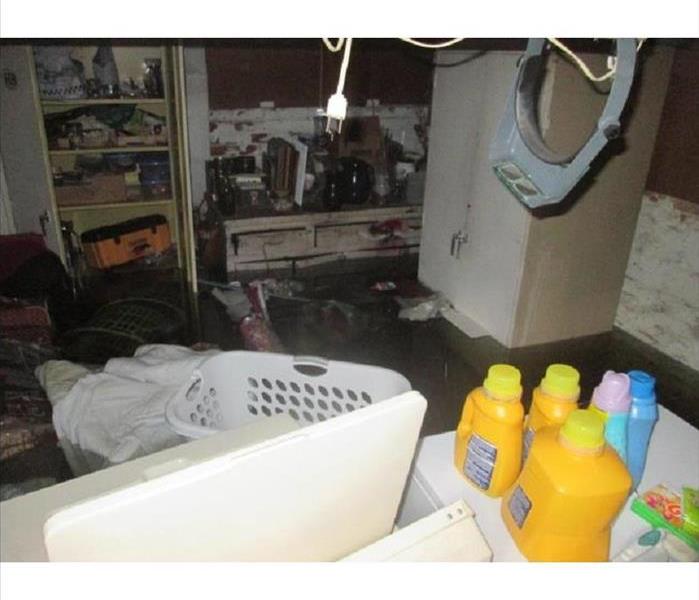 This Long Beach home’s basement flooded due to heavy rains.
This Long Beach home’s basement flooded due to heavy rains.
A basement can flood at any time, although flooding most often occurs during heavy rainfall. Basements are inherently prone to flooding because they are the lowest level of a building and are normally built partly or entirely below ground level. There are a number of reasons why your Burbank basement could flood, including:
- A blocked or failed sewer lateral pipe
- Heavy rain causes surface water to pool around your home
- Storm sewer backup
- Sanitary sewer backup
- Foundation drainage failure
- Water supply-line break or hot-water tank failure
- And many more
Have Questions about Basement Flooding?
Call Today – 818.842.1400
If flood water is not handled quickly and properly, it can jeopardize your health and safety, and cause severe damage to your home’s structure. Remember, the longer you wait, the worse the problem will get.
The bottom line: a flooded basement can jeopardize your health, safety, and your home’s integrity. It’s worth making a call to SERVPRO of Burbank and let our trained, professional crews handle the situation safely and correctly. We have earned the trust of hundreds of homeowners, business owners, and property professionals.
We are Flooded Basement Specialists:
- We are Available 24 hours/7 days per week
- We’re a Preferred Vendor to many National Insurance Companies
- We Bill The Insurance Directly – One Less Thing For You To Worry About
- Our Technicians are Highly-Trained in Water Restoration Techniques
- We use s500 IICRC Restoration Standards
- Advanced Inspection and Extraction Equipment
Basement Flooded? Call Us Today – We’re Ready To Help 818.842.1400
The Rainy Season Has Arrived!
1/11/2017 (Permalink)
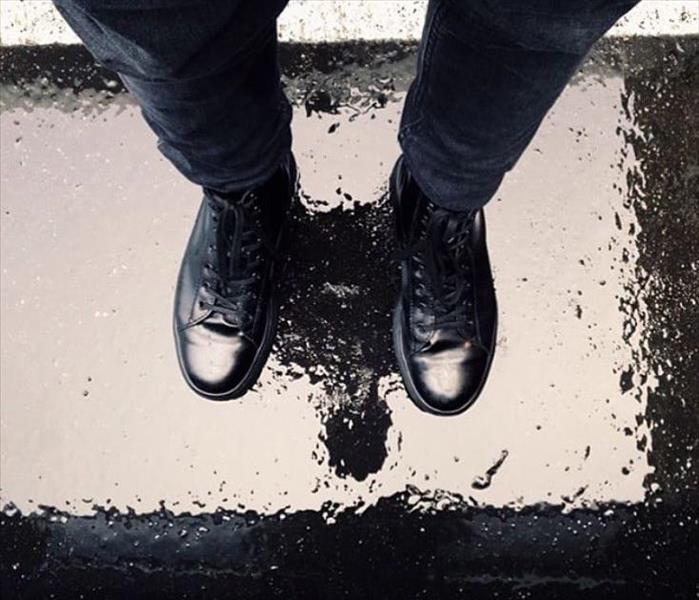 Get those boots out and ready for the storm season!
Get those boots out and ready for the storm season!
Well SERVPRO readers, in case you hadn’t already noticed, what reporters have dubbed as ‘The Pineapple Express’ has arrived in Southern California! Meteorologists say that we will be hit with a series of storms as the week continues, and storms are forecasted to dump 2-4 inches along the California coast through Friday.
While this may be great news in light of the drought California has been having, there can also be unforeseen complications that come as a result of this major upswing in our average rainfall. Flash floods could affect Los Angeles County communities that experienced wildfires last summer and fall, with persistent wet conditions putting areas at risk for mudslides. Our readers may also experience unexpected leaks and drips, causing water damage in their homes. For all of these potential emergencies, SERVPRO BURBANK is prepared and ready to respond.
And while we’re out tending to the chaos storms can bring, we wanted to offer you a few tips to help safeguard your home from water loss and disaster this El Nino season – especially with a break in the rains headed our way on Friday!
Tip #1: Check those gutters! This can be a simple but very effective way to prevent unwanted water from entering your home or business. Gutters that are clogged with debris from overhanging trees, trash, or roofing materials can easily clog the drain and shuffle unwanted water your way.
Tip #2: Tarp up any unfinished roofing projects. Going along with our first tip, small openings in the roof of your home and business can quickly become large openings with heavy rain, causing water damage inside your building. Make sure to give your local roofing company a call and get those potential problem areas patched up ASAP.
Tip #3: Examine your window glaze and compound. Often times, glazing compound can shrink during the warmer months, making windows more susceptible to unwanted rain water penetration. Your local contractor can help patch this up for you, ensuring that you are set and ready for even the heaviest of The Pineapple Express rains! Another helpful tip… make sure you close your windows before going to bed or leaving the home!
And finally, Tip #4 (the most important!): Should you find yourself in a situation where you do have a water damage emergency, call SERVPRO BURBANK. Our staff is prepped and ready to respond and help make your disaster, "Like it never even happened."
How to survive a Flood
10/19/2016 (Permalink)
Floods are the number one natural disaster in the United States, and when looking at the 30-year average, they are the number one cause of weather-related fatality with an average of 81 deaths per year.
To put it simply, it’s easy to underestimate the power of water. In a flash flood, six inches of moving water is enough to knock a person over; 12 inches of moving water can sweep away a small car. Both moving and rising water demand respect!
Few places are immune to floods, wherever it rains, flooding can occur. And many of us TreeHugger types are known to live nearby or spend time in areas that are especially prone to flooding. So with that in mind, here are some pointers to help keep you safe when a great deluge decided to do its thing.
Turn around don’t drown!
The National Oceanic and Atmospheric Administration (NOAA) came up with the phrase "Turn around don’t drown" (and then registered it as a trademark) to further the National Weather Service’s (NWS) mission to help save lives. As it turns out, the CDC reports that half of all flood drownings happen when a vehicle is driven into hazardous floodwater. As mentioned above, 12 inches of moving water can take a small car; two feet will sweep away a larger vehicle. People think they can pass a puddle in the road, only to have their car stall and then ... whoosh. Turn around, don't drown!
Flash floods 101
This may sound obvious, but apparently it’s not the first thing that comes to mind for many. If there is a chance of flash flooding, move to higher ground as quickly as possible. If you’re in your car and water rises around it, leave the car and seek higher ground. (If the water is moving, however, do not leave the car.)
The NWS notes that a creek only six inches deep in mountainous areas can swell to a 10-foot deep raging river in less than an hour if a thunderstorm produces intense rainfall. During heavy rainfall or in times of flood watches or warnings, do not camp or park near streams, creeks or rivers.
Stay tuned in
During thunderstorms, heavy rainfall or other inclement weather, stay tuned to local television or radio for weather updates and emergency instructions. Here are what the alerts mean:
Flood Watch: Flooding is possible.
Flash Flood Watch: Flash flooding is possible; be prepared to move to higher ground.
Flood Warning: Flooding is occurring or will occur soon; if advised to evacuate, do so immediately.
Flash Flood Warning: A flash flood is occurring; seek higher ground on foot immediately.
Know your elevations
In the same way flight attendants point our emergency exit doors, you should familiarize yourself with high points in your area (whether ground or buildings) and especially know those that are accessible by foot.
Prepare your home
Outdoor furniture can be moved inside and important items can be moved to the highest point in your home. Electrical appliances should be unplugged (but only when you are dry and not standing in water). You may be instructed to turn off your gas and electricity at the main switch or valve, which can help to prevent fires and explosions.
Protect your pets
Never leave your pet home alone when there is a flood warning, even if your home is not directly threatened. Roads may be closed or your home may become otherwise inaccessible, leaving your pet stranded. Also, never leave a pet leashed or caged during a flood warning; the reason there is obvious, right?
Also be extra careful with pets if your area is directly flooding. If it takes just six inches of water to whisk an adult away, it takes much less to take a pet.
After a flood:
- Return home only when authorities say it is ok.
- Watch out for debris where water has receded.
- Before entering your home, look outside for loose power lines, damaged gas lines, foundation cracks or other damage.
- If you smell natural or propane gas or hear a hissing noise, leave quickly and call the fire department.
- Check for creatures that may have taken refuge or been washed inside your home; snakes, in particular, are prone to displacement. Especially check before you let pets re-enter.
- If your property has been flooded, allow your pets to reorient when you return. Flooding can wash away scents and may have destroyed landmarks your pet uses to keep track of locations. Without those, getting lost is more likely. Walk your dog with a leash for a few days until she/he is readjusted.
- Be cautious with paths and roadways, as they are often eroded and compromised by floodwater.
- Avoid standing water as there may be risk of electrocution from underground or downed power lines.
- Contact your local or state public health department for specific advice for boiling or treating water where you are after a disaster as water may be tainted.
- Let your family know you’re safe.
- And while it may be the last thing on your mind, remember to photograph damage to your property for insurance purposes.
info provided by http://www.treehugger.com/green-home/how-survive-flood.html
SERVPRO's national partnership with the American Red Cross
9/30/2016 (Permalink)
 Red Cross recognizes SERVPRO of Burbank for their contribution to disaster preparedness and recovery efforts
Red Cross recognizes SERVPRO of Burbank for their contribution to disaster preparedness and recovery efforts
The American Red Cross recently recognized SERVPRO®, a cleanup and restoration company, for participating in its Disaster Responder Program. As a member of this program, SERVPRO pledges a donation to the Red Cross as an action of preparation against the calculated 66,000 disasters that occur annually. SERVPRO is entering their third year of partnership with the Red Cross, and to date their donations to the organization exceed one million dollars.
The majority of the disasters that occur every year are house fires. Statistics cited by the Red Cross state that in the U.S. seven people die in a home fire each day. The Red Cross has aimed to reduce deaths and injuries caused by home fires 25 percent by the year 2019. Because of this goal, they launched a Home Fire Campaign in October of 2014. The support of SERVPRO and other Disaster Responder Program members allows the Red Cross to pursue their home fire prevention goals while continuing to provide critical services to disaster victims.
“Statistics compiled by the National Fire Protection Association (NFPA) show the majority of home fires are related to cooking accidents.” Dave Tronson, owner of SERVPRO of Burbank, states, “the risk for home fires exists all year long,” further extending their pledge to help Red Cross to respond and prevent such a disaster as a home fire.
Not only does SERVPRO help other business and home owners with recovery for fires, floods, and other disasters, the company and its franchises actively support disaster preparedness education, including fire prevention efforts. When disaster strikes, the relationships with major insurance companies combined with the industry-leading job-management technology that SERVPRO has can smooth the path to rebuilding and restoration for home and business owners affected by disastrous events.
“SERVPRO’s commitment to the Red Cross Disaster Responder Program means that when disaster strikes, homeowners can count on the Red Cross to address their immediate needs and supply essential services, “ said Tronson. “Once the immediate emergency is under control, homeowners can count on the expertise of restoration specialists at SERVPRO of Burbank to help restore their property and move forward with their lives.”
For fire prevention tips and information about fire and water damage restoration services, please visit www.SERVPRO.com. For more information on SERVPRO® of Burbank, please contact Dave Tronson at (818) 842-1400 or SERVPRO2720@SERVPROburbank.com
About SERVPRO®
Founded in 1967, the SERVPRO® Franchise System is a leader and provider of fire and water cleanup and restoration services, and mold mitigation and remediation. SERVPRO's professional services network of more than 1,700 individually owned and operated Franchises responds to property damage emergencies ranging from small individual disasters to multi-million dollar large-loss events. Providing coverage in the United States and Canada, the SERVPRO® System has established relationships with major insurance companies and commercial clients, as well as individual homeowners.
El Nino is Here!
1/6/2016 (Permalink)
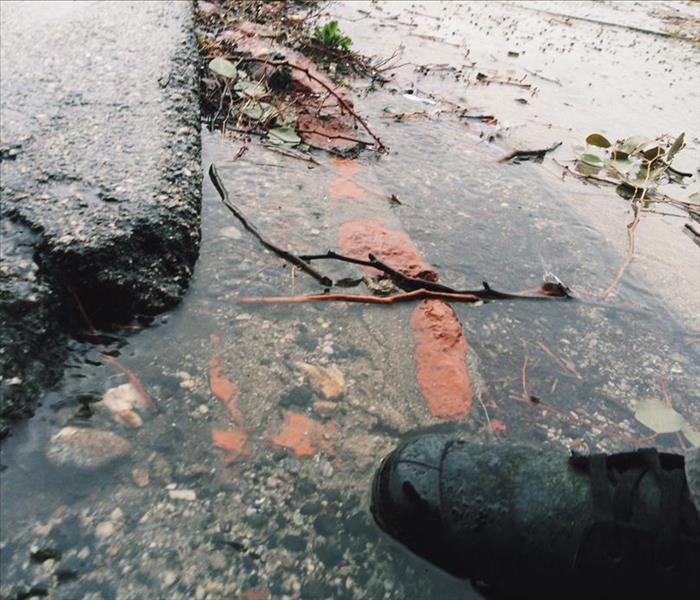 The first of El Nino's Socal rains.
The first of El Nino's Socal rains.
Well SERVPRO readers, in case you hadn’t already noticed, El Nino has arrived in Southern California! Meteorologists say that we will be hit with a series of storms as the week continues, and storms are forecasted to dump 2-4 inches along the California coast through Friday.
While this may be great news in light of the drought California has been having, there can also be unforeseen complications that come as a result of this major upswing in our average rainfall. Flash floods could affect Los Angeles County communities that experienced wildfires last summer and fall, with persistent wet conditions putting areas at risk for mudslides. Our readers may also experience unexpected leaks and drips, causing water damage in their homes. For all of these potential emergencies, SERVPRO BURBANK is prepared and ready to respond.
And while we’re out tending to the chaos El Nino can bring, we wanted to offer you a few tips to help safeguard your home from water loss and disaster this El Nino season – especially with a break in the rains headed our way on Friday!
Tip #1: Check those gutters! This can be a simple but very effective way to prevent unwanted water from entering your home or business. Gutters that are clogged with debris from overhanging trees, trash, or roofing materials can easily clog the drain and shuffle unwanted water your way.
Tip #2: Tarp up any unfinished roofing projects. Going along with our first tip, small openings in the roof of your home and business can quickly become large openings with heavy rain, causing water damage inside your building. Make sure to give your local roofing company a call and get those potential problem areas patched up ASAP.
Tip #3: Examine your window glaze and compound. Often times, glazing compound can shrink during the warmer months, making windows more susceptible to unwanted rain water penetration. Your local contractor can help patch this up for you, ensuring that you are set and ready for even the heaviest of El Nino’s rains! Another helpful tip… make sure you close your windows before going to bed or leaving the home!
And finally, Tip #4 (the most important!): Should you find yourself in a situation where you do have a water damage emergency, call SERVPRO BURBANK. Our staff is prepped and ready to respond and help make your El Nino disaster,"Like it never even happened."






 24/7 Emergency Service
24/7 Emergency Service






